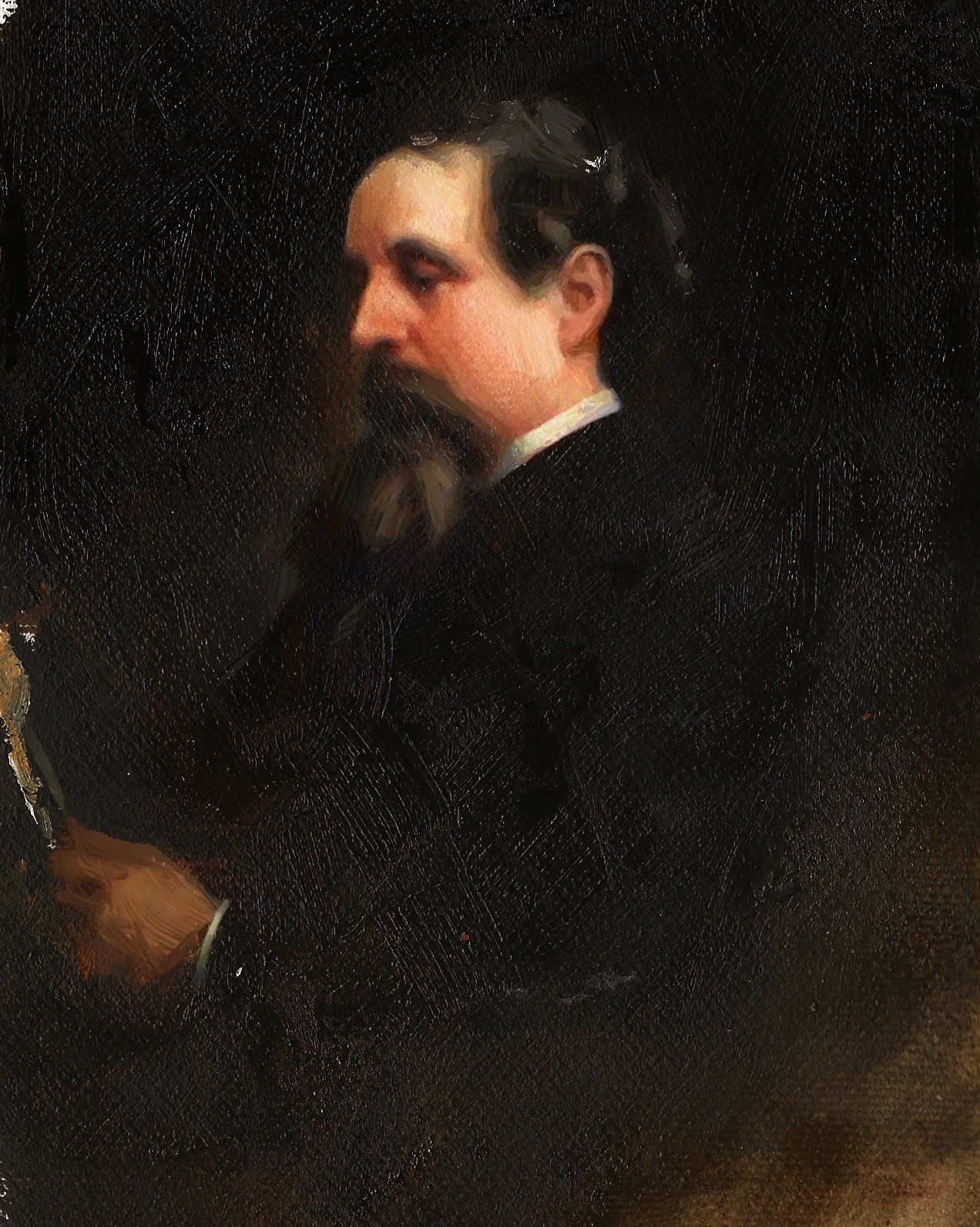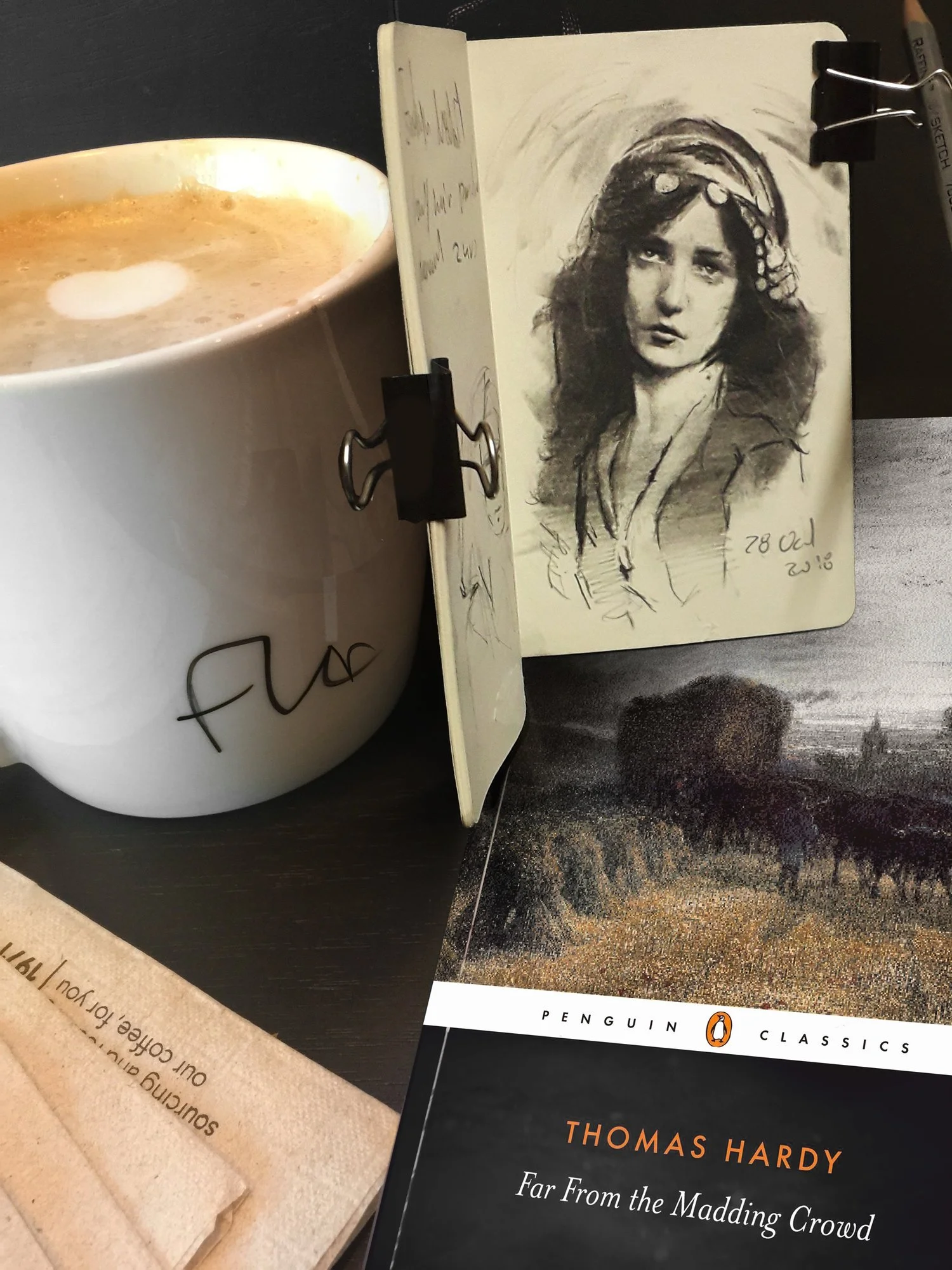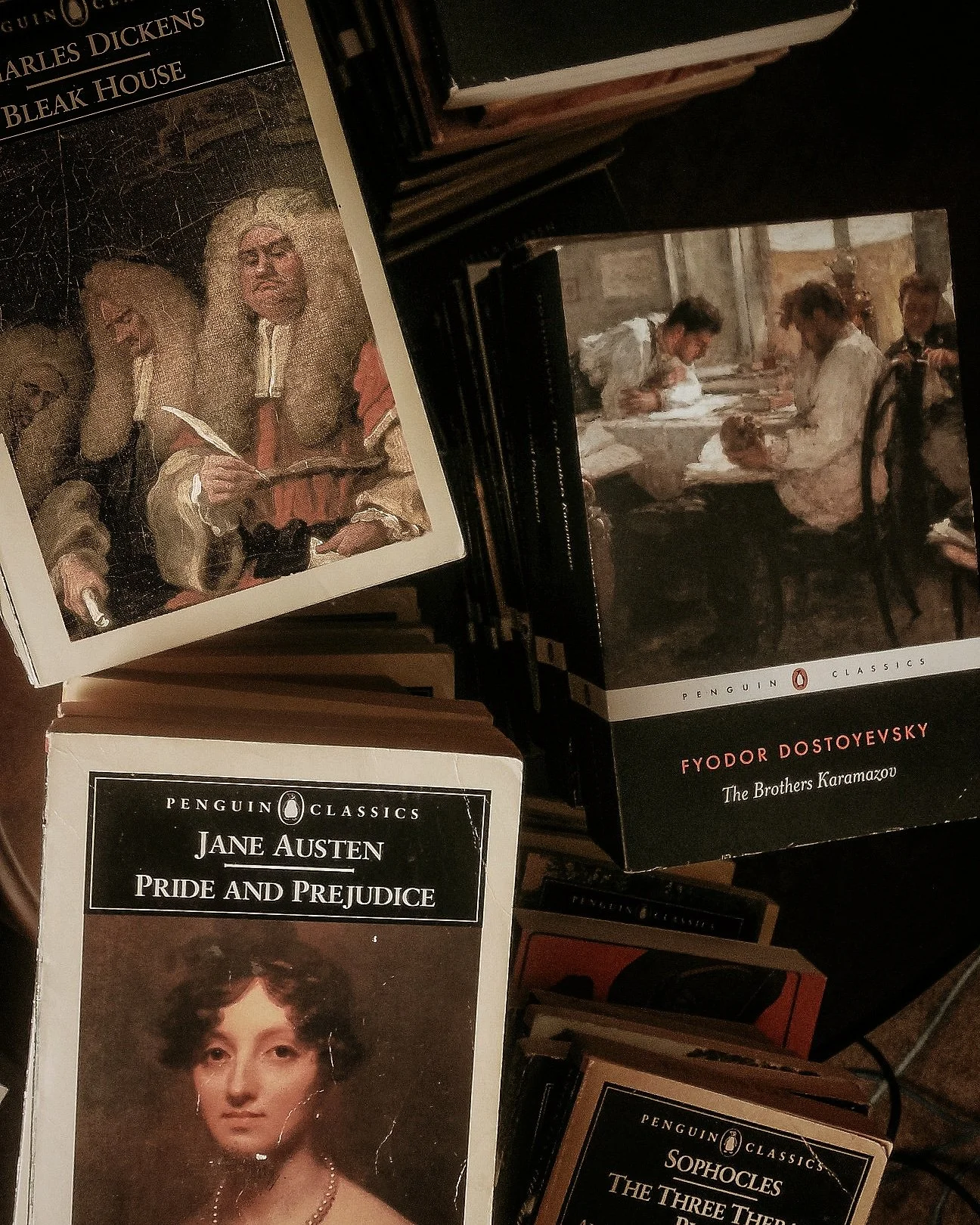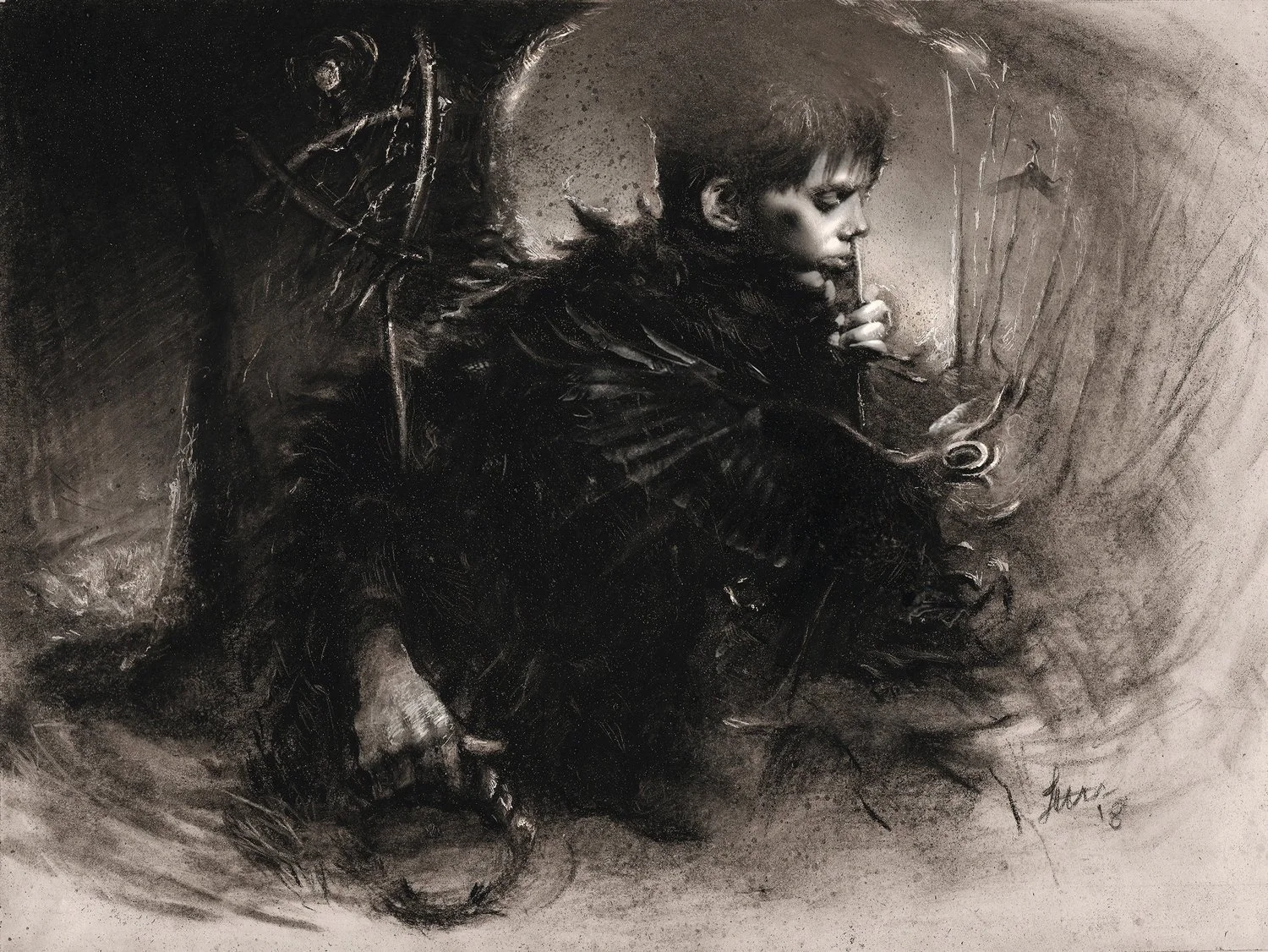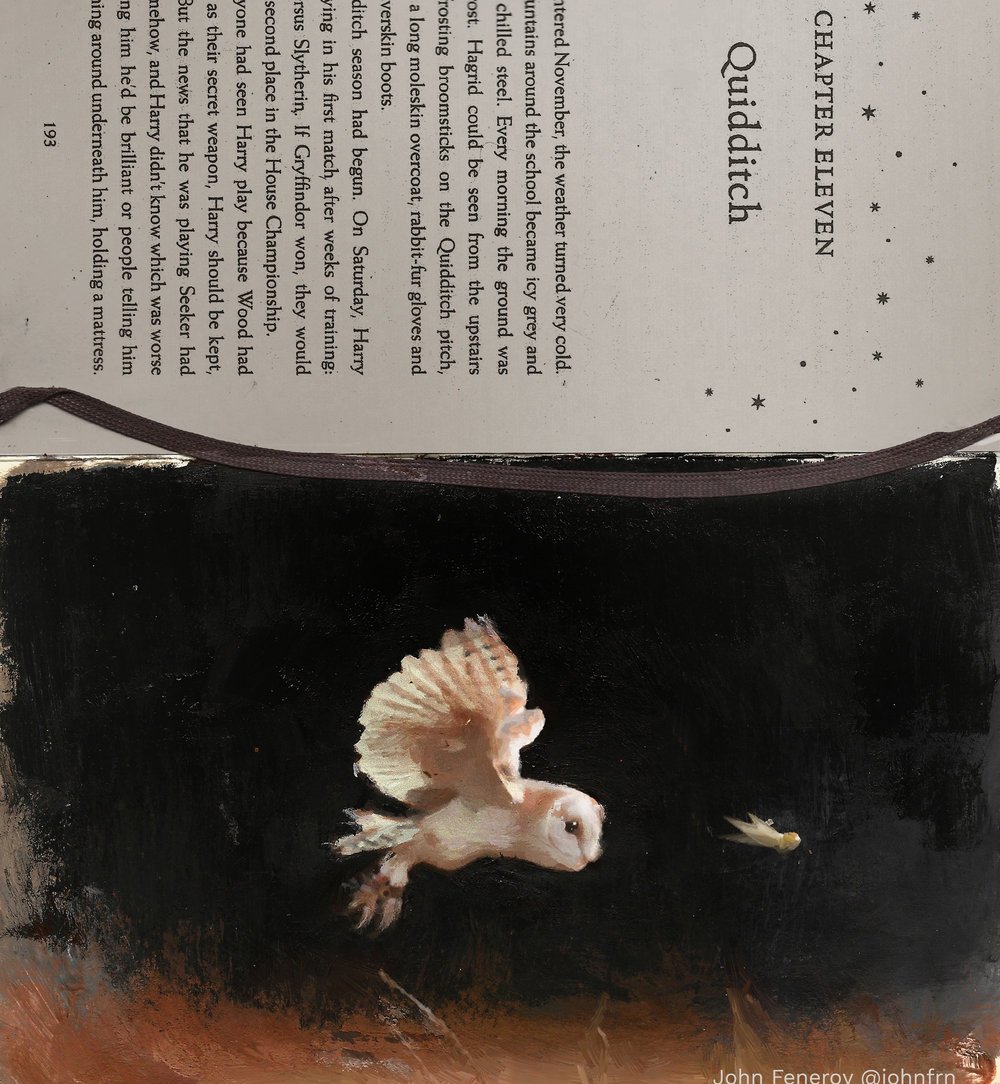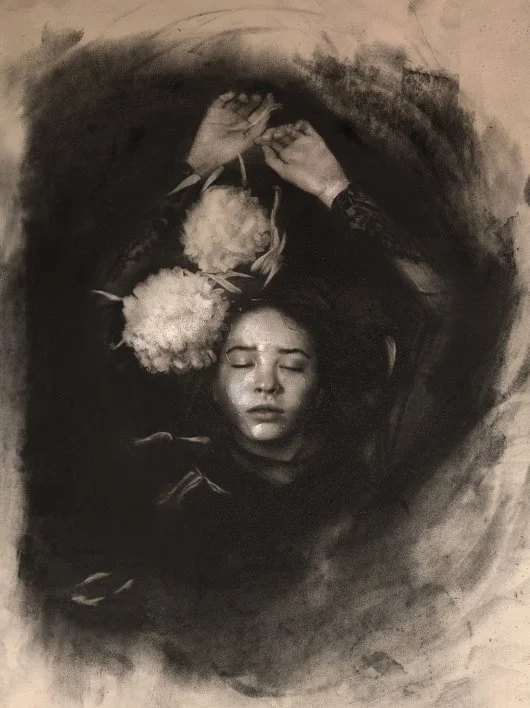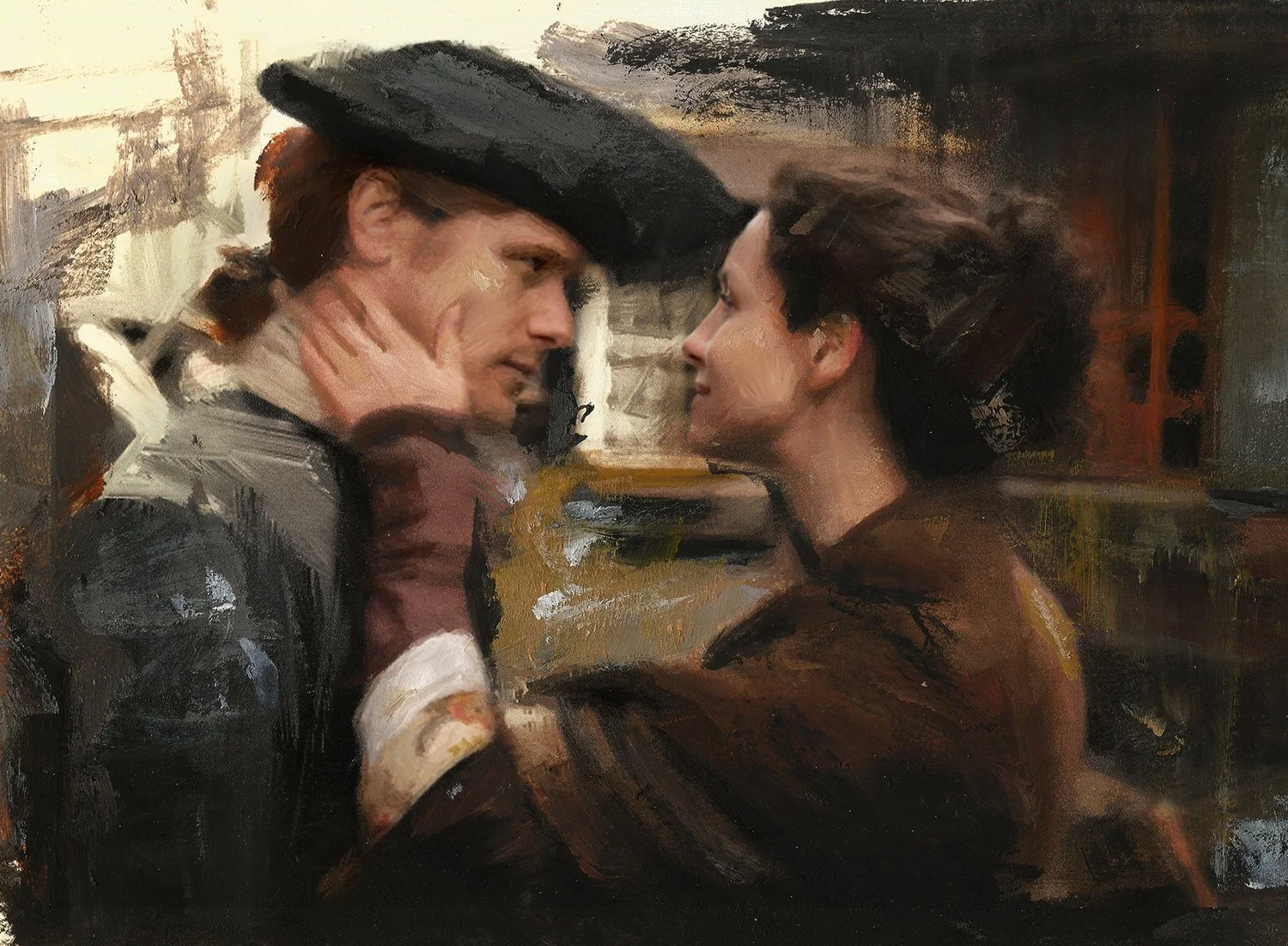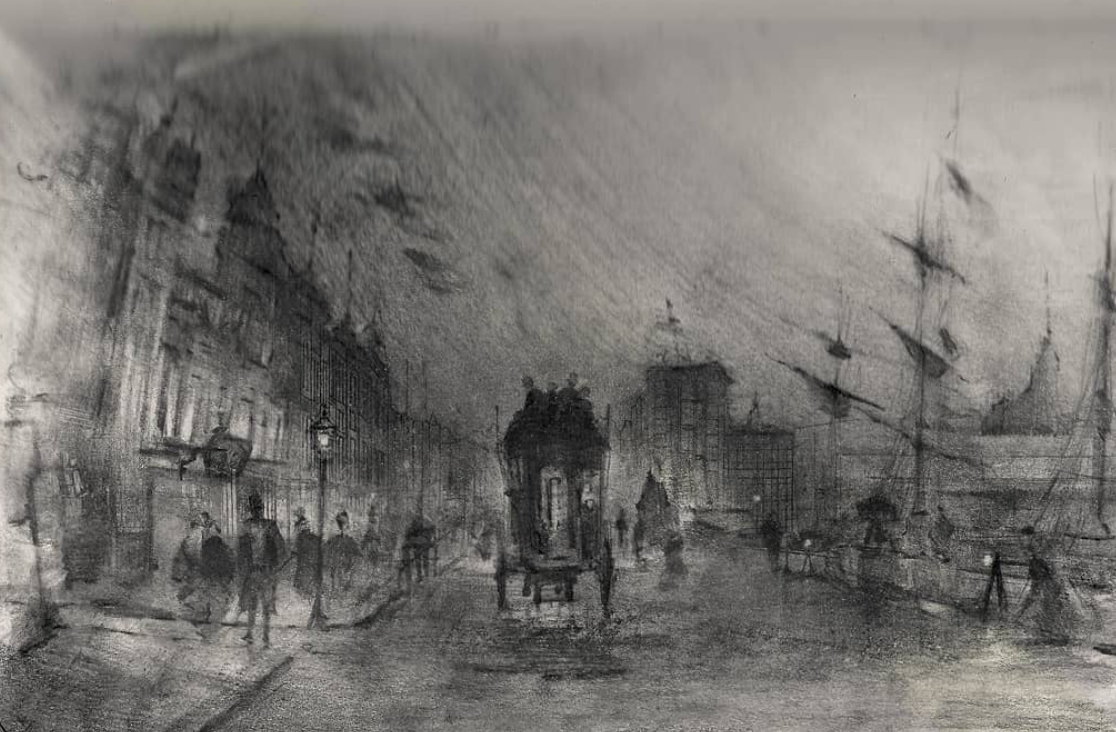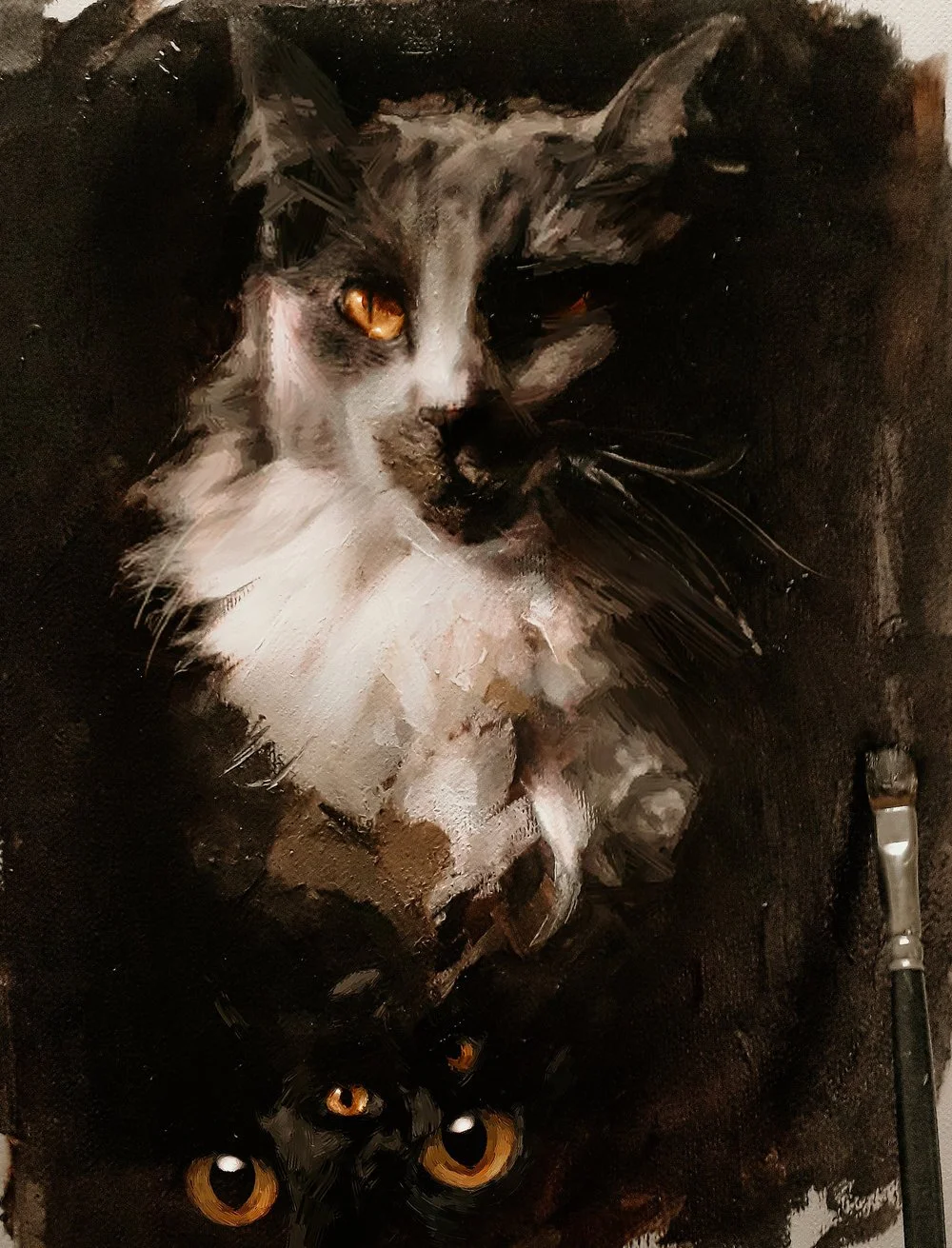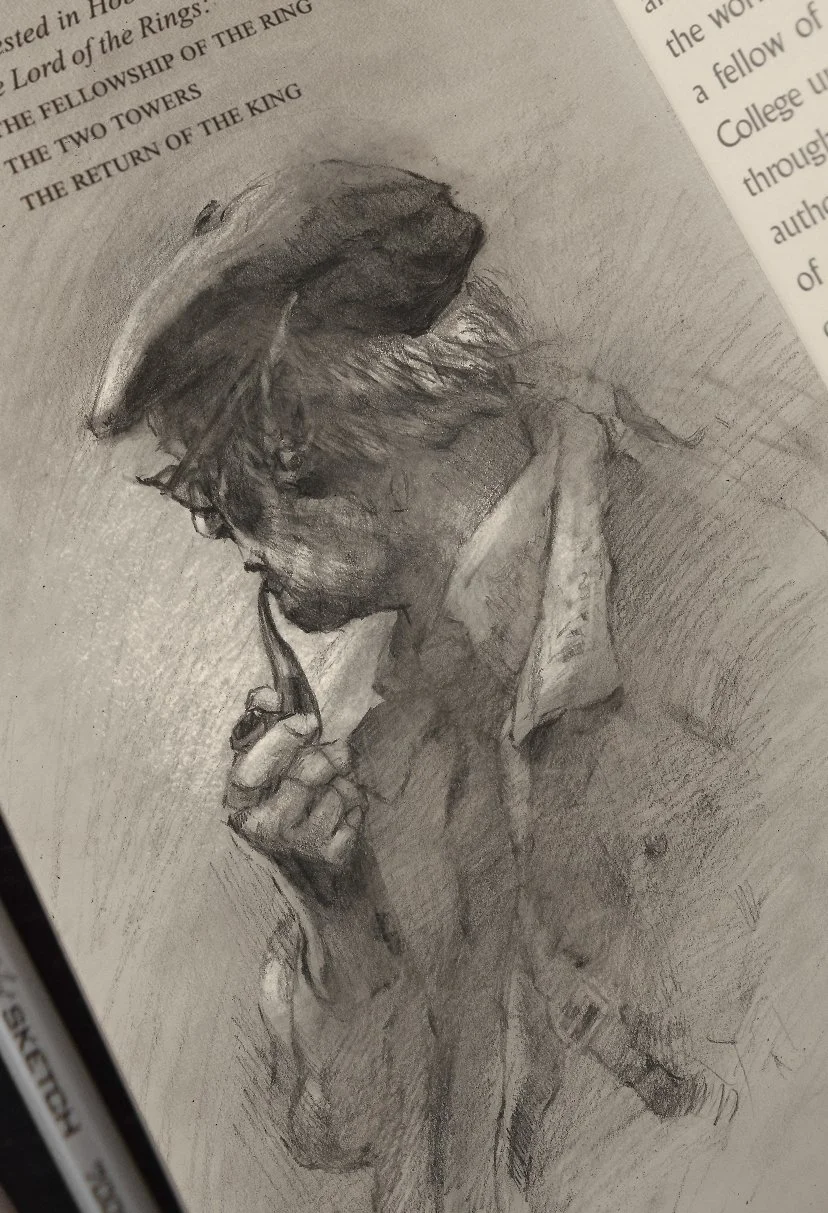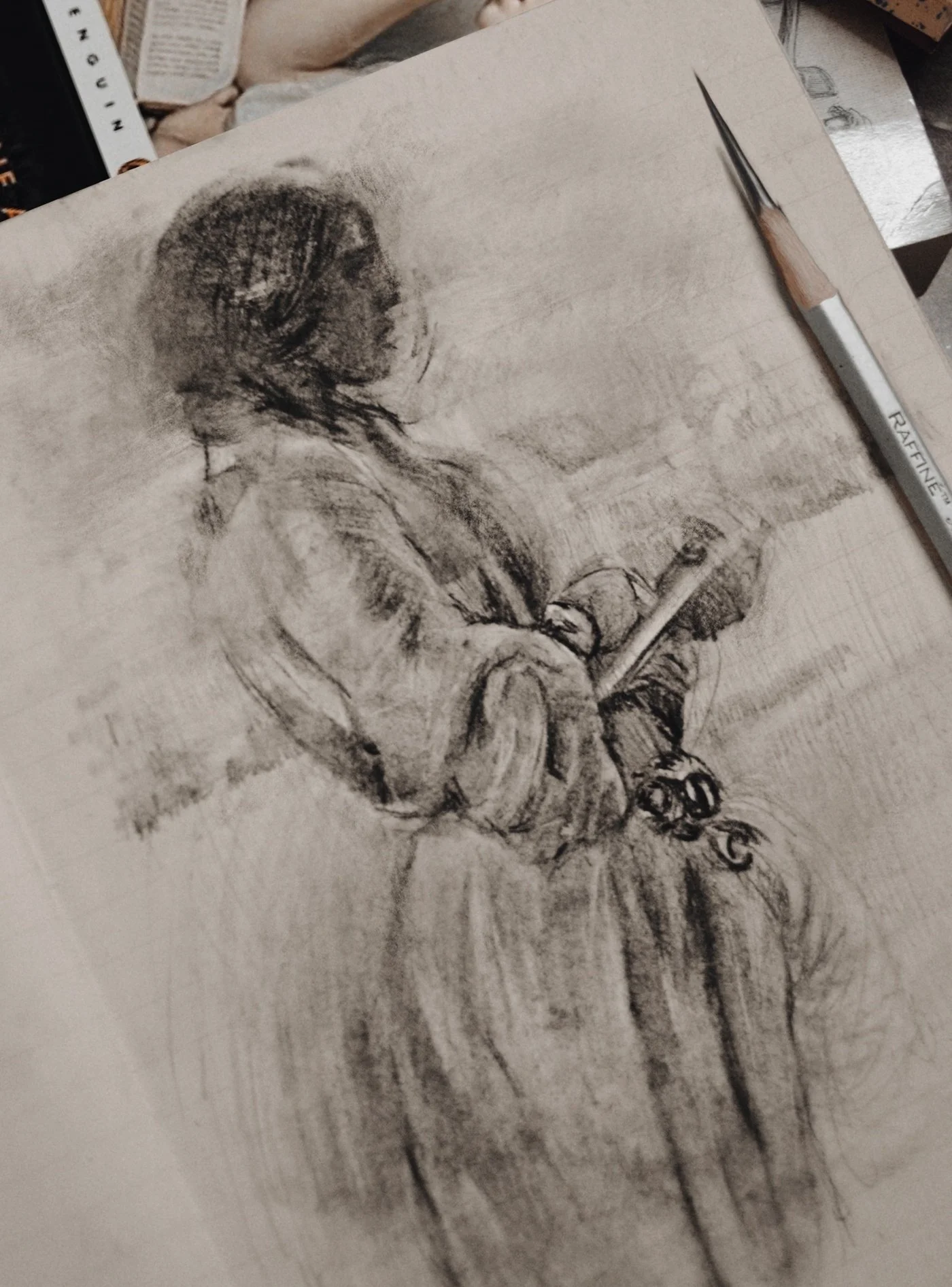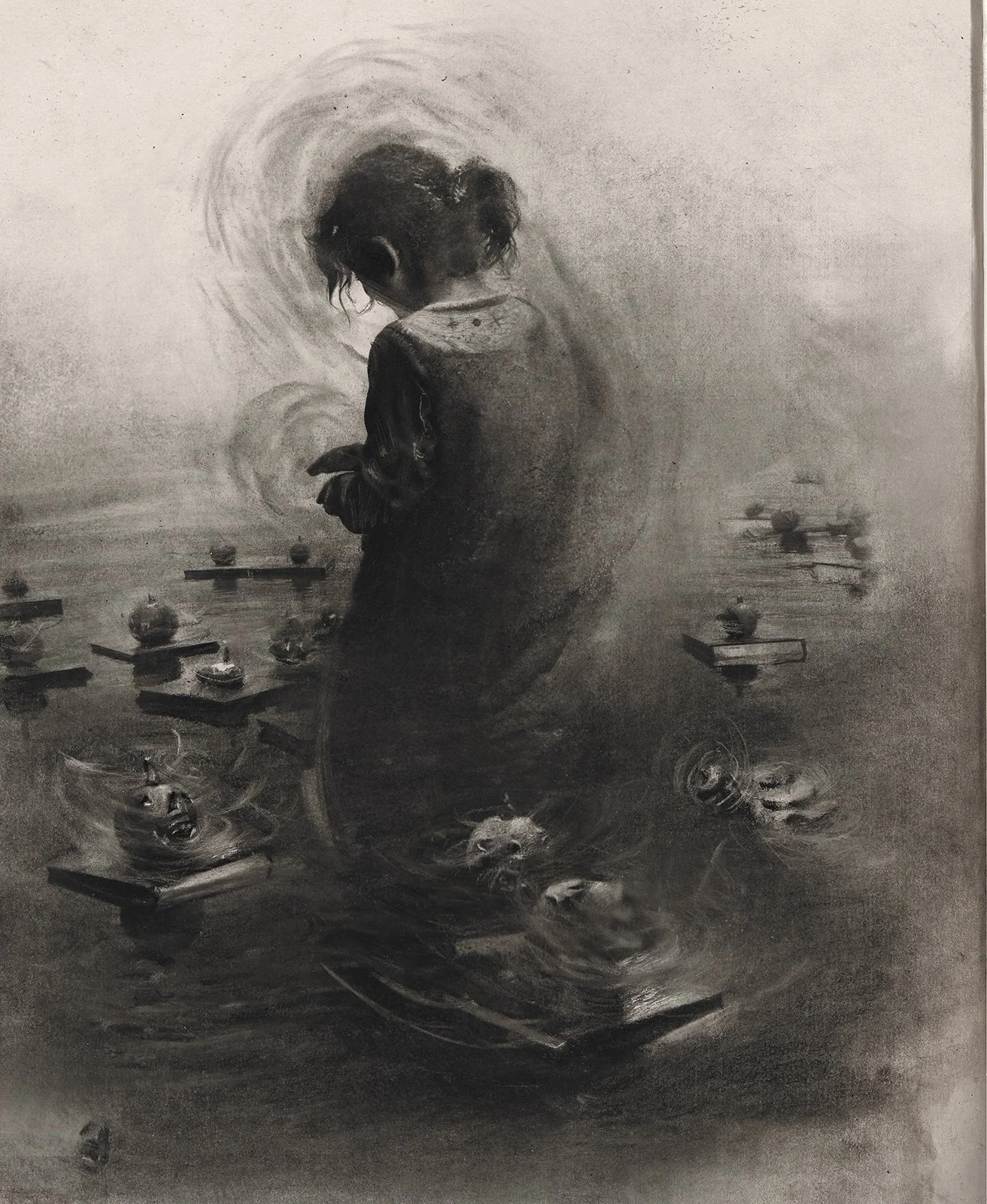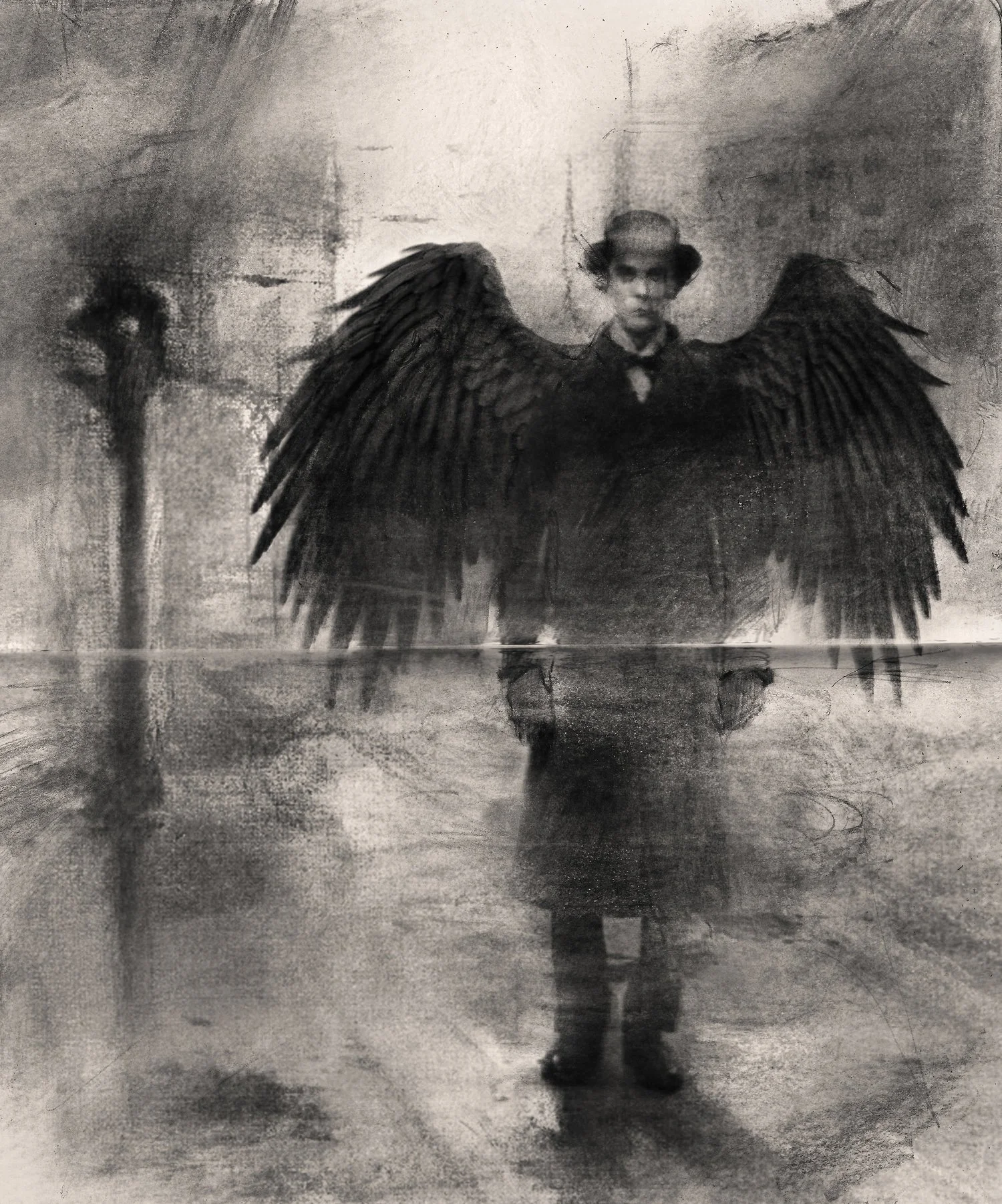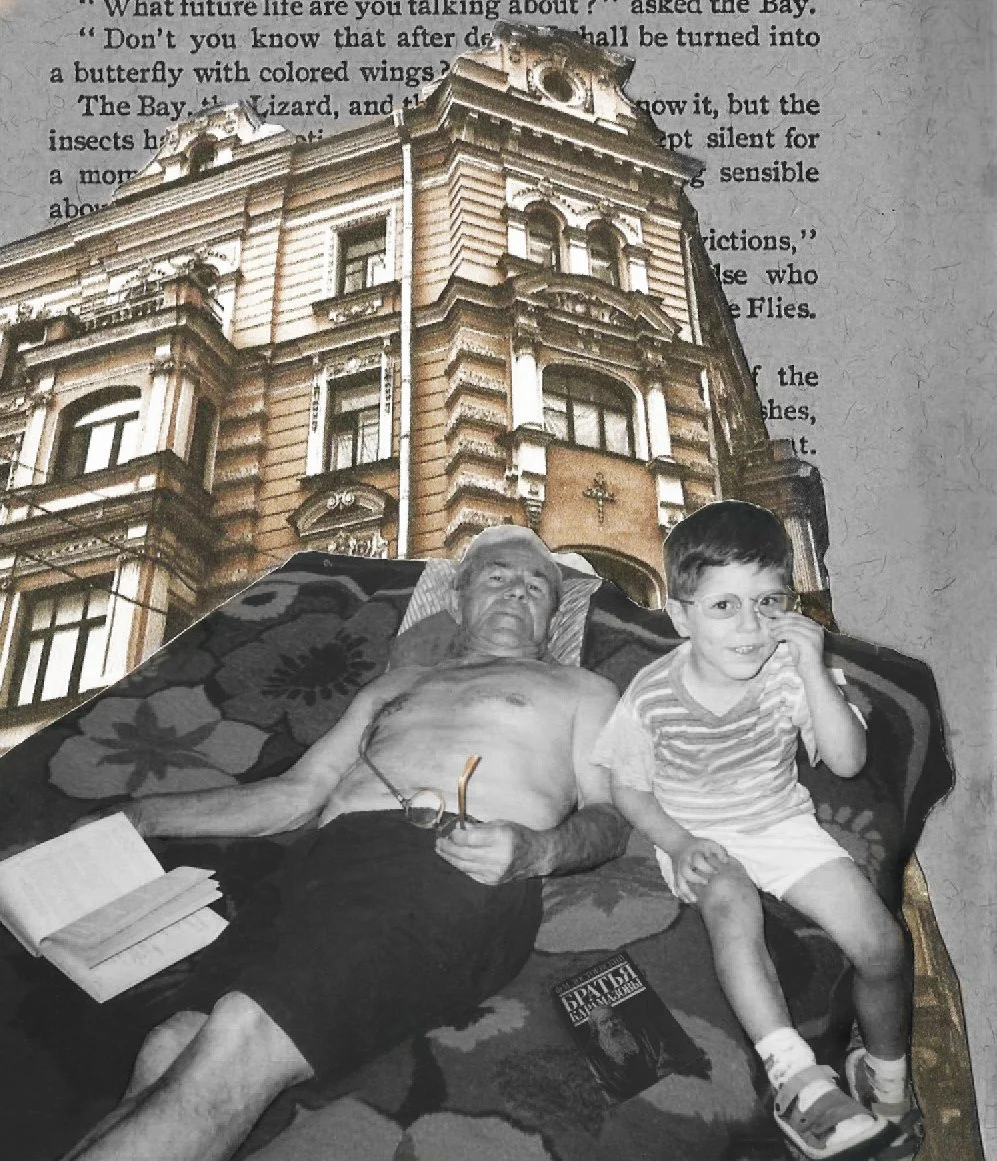Craft & Creativity
John Fenerov

Resources for Craft & Creativity
LITERATURE & ART
Literature has always been my first love, second only to art. The world is full of inspiration, and when you venture out into it, every person you encounter is unique and has a different story to tell…
As a writer you’re always looking to create new characters and plots, and as an artist you’re always searching for new concepts and approaches to your art. In their respective mediums, both can express meaningful themes and experiences of life through their subject matter, capturing the essence and intent of realism.
For example, in David Copperfield —Charles Dicken's most autobiographical novel— the title character is named after the inverted initials of the author’s own name (CD becomes DC). Translating his personal story into literary fiction helped Dickens revisit some of the difficult memories and truths in his own life.
Literature and art have been interlaced since god knows when, but even as separate disciplines they are naturally supportive of each other—a work of art may serve as creative inspiration for a novel, a research source, or a structural element within a story’s plot.
I find the experience of reading a good book to be a meaningful alternative to hours spent searching endlessly through sites like Pinterest in hopes of finding something one might resonate with…
So rather than seeing it as simply another daunting task, become inspired to pick up a great work of literature by considering the creative stimulation some of the world’s foremost artists have found within their pages (see article link below). I myself have illustrated several pieces based on classic and young-adult literature, such as Six of Crows and the Raven Cycle.
Of course stacking your TBR list with informative and useful resources pertaining to your craft is equally indispensable. Keeping that in mind, I’m not suggesting you read all the books below, or purchase all the items I’ve provided in the materials section. After digging through them, feel free to choose those you believe will work best for you.
BOOKS:
1. Conceptual Art: A Critical Anthology by Alberro, Alexander (Further reading)
2. Street Photographer by Maier, Vivian (Further reading)
3. Autobiography by Wyeth, Andrew (Literature, study, further reading)
4. Lessons in Classical Drawing: Essential Techniques from Inside the Atelier by Aristides, Juliet (Study)
5. Pre-Raphaelites by Birchall, Heather (Study, further reading)
6. Symbolism by Wolf, Norbert (Study, further reading)
7. How to Draw Portraits in Charcoal by Fowkes, Nathan (Study)
8. Why Old Places Matter: How Historic Places Affect Our Identity and Well-Being by Mayes, Thompson M. (Further reading)
9. Atkinson Grimshaw by Robertson, Alexander (Study)
10. John Singer Sargent: Figures and Landscapes, 1874-1882; Complete Paintings: Volume IV by Ormond, Richard(Study)
11. Alla Prima: Everything I Know about Painting by Schmid, Richard (Study)
12. Selected Writings on Art and Literature by Baudelaire, Charles (Literature)
13. I'd Love to Draw! by Loomis, Andrew (Study)
14. What Is Art? by Tolstoy, Leo (Literature)
15. White Nights by Dostoyevsky, Fyodor (Literature)
16. The Goldfinch by Tartt, Dona (Literature)
17. The Writer's Brush: Paintings, Drawings, and Sculpture by Friedman, Donald (Study)
18. Portraits: John Berger on Artists by Berger, John (Further reading)
ARTICLES:
1. When Art Imitates Art: Portraits of Literary Characters by Famous Artists by Emily Temple (Further reading)
TOOLS & MATERIALS
Below is a list of all the materials I use. I've also included extra brands and materials other than my own, as further resources for you to discover and develop your own approach and style. I'll explain briefly how I work with each one, starting with charcoals.
Charcoal has been utilized as a creative tool since the beginnings of human history, originating in caves where people drew using only burnt sticks of wood. With charcoals I draw gently and softly, lightly controlling my pressure on the surface of the paper. I often use them together with graphites, jumping back and forth between the two mediums. I find if my pressure is touching the surface too boldly, the paper will suffer from smudging and marring, creating an overly shiny and muddled texture.
Note that the less graphite I use, the less shine I get on the paper. This is why I alternate between the two mediums, creating the desired result based on my personal choices and approach to each work.
With the blending stumps (and also graphites ranging from 2H to 2B) I gently construct the face, establishing a clear statement of the light. Before utilizing the stumps I sometimes apply tissue paper with a little bit of charcoal, working to find landmarks within the darker facial features such as the nose, cheekbones and eyes.
I use erasers to highlight before using any white medium, which I then add for more contrast only if needed. When I’m looking for darker shades, I use Cretacolor or Conte. The difference between stick erasers 2.5 and 2.3 is that the first is wider and perfect to create lengthy highlights such as the texture of hair, and the other is round and tiny, suitable more for controlling pressure on the highlights of the eyes, nose and lips. You can't go wrong with either, and you can experiment on your own and decide which one works best for you.
Next up is inks—I don't really do much with these, unless I’m manually sketching or looking to apply more contrast between charcoal and graphite.
The brands of oils listed are the ones that I use the most, which provide a rich texture and scent to my works. I love the "literary" fragrance they give off, which to me resembles the smell of an old book.
I primarily use Daler & Rowney for my sketchbook pages. I don't necessarily prime and varnish my pieces afterwards, I just let them dry open. I mainly use only warm coloured pencils, especially oranges for my initial drawings and underdrawings.
Often when sharpening pencils and sticks people go straight for the blades on the first step—personally I use the sharpener first to get a nice pointy tip, then I use an x-acto knife to refine the curves around the pencil, and later the blades to carve it up to my desired level. Then I may use sandpaper if I want to polish the pencil.
TOOLS & MATERIALS:
Charcoal: General’s Pencils, Ritmo Nitram (+stylus, baton), Cretacolor, Conte, Vine charcoal, past
Blending Stumps: Manual, all sets
Graphite: Raffine, Lyra, Staedtler
Erasers: Tombow Elastomer Eraser Mono Zero Ultra-fine 2.3mm & 2.5x5mm, kneaded eraser
Inks: Micro Pens, Gelly Roll
Brushes: Royal Talens, Van Gogh, Rosemary
Oils: Daler & Rowney, Rembrandt
Acrylics, Watercolor: Reeves, Daler & Rowney
Coloured pencils: Prismacolor (Only warm ones)
Sharpening: Manual pencil sharpener, Razor blades, X-Acto knife
Papers: Canson Ingres toned paper, Fabriano, Daler & Rowney Cartridge, Artist’s Palette Gesso primed canvas sketchbook, Moleskine sketchbook, reporter’s notebooks, Strathmore Charcoal and Toned paper.
Fixatives: Grumbacher, Rayher, Dom
Turpentine, Varnish, Linseed oil: Reeves, Royal Talens
Acetone (limited use only)
After John Atkinson Grimshaw, The Broomielaw Glasgow, 1889. Graphite on Paper.
Finding Your Voice
I don’t believe I’ve ever been directly inspired to create an original piece after viewing the work of another artist—copying masterworks doesn’t grant me originality, nor does the copying of a photograph—I approach these works as studies, and normally don't care if I actually finish them or not.
I’ve studied at art schools, but none of them have given me true artistic spirituality, which is something I’ve had to develop on my own. And so I turned to books—of course someone else could approach this process differently—but I grew up with the works of classic literature through the influence of my grandfather, and in my paintings I explore the feelings and moods they inspire within me.
I find being an avid reader of literature allows me to have a steady stream of new ideas and inspirations, which can serve as a good resource to help relieve the dilemma of artist's or writer's block.
And even though I’m of course an artist, what I’ve found from experience is that both blocks aren't usually caused by an actual lack of creativity, but more due to a particular emotion or idea that might be holding us back... sometimes I struggle to draw —just as a writer may struggle to write— asking questions like ‘is this worth my time? And if so, who’s going to buy my artwork (or my novel)? ‘
These questions constantly pop up when we’re having difficulty keeping our intentions clear about a particular project we are involved in, or about our overall path and purpose as an artist.
Such thoughts can feel very discouraging, and prevent us from pursuing what we truly love. I was asked by someone a few months ago how not to feel this way when you're experiencing a block, or are intimidated by someone who’s achieved a greater level of skill or success than they have; I believe a shift of perspective is key—you shouldn't remain fixated in this state of mind.
I’ve found taking time for activities other than painting can be very healthy for one’s creativity—go outside, walk, run or bike, and let your inner process of drawing and thinking go on as it will in the background. Dickens scrolled tens of miles daily across London while working on his novels, and couldn't work if he didn’t walk.
Also, rather than derailing yourself by obsessively looking through the lens of others —trying to copy and compare how they do this and that— remember not to forget your own voice.
Learn how to be patient with yourself while developing your technical and creative abilities, and not worrying too much about having to compete with others. This process takes time, as it did for me. However time is on your side, as it's never too late to try something new, or return to that which you have previously abandoned.
Here’s an example to consider: you're traveling for the first time in a foreign land, you're lost and asking someone for directions—the sensible thing to do next is of course thank this person for being kind enough to offer you directions, and then continue along on your journey… you’d never expect to drag this person along with you towards your destination.
The same thing applies to artists, writers and everyone else. Ultimately we are all alone in our personal and creative journeys, and therefore if we’re truly curious and committed to finding real answers, we have to experience that journey on our own, through our own unique perspective.
This is not to say that you cannot appreciate the great qualities other artists may have to offer. If you have the opportunity, embrace such people—get to know them, let them know you admire them and their works.
Focus not on 'overcoming' them, but instead try to support and enrich their own art in any way you can. Then you may notice how much they’re also in need of encouragement, and how grateful they are for your support. Who knows, you might even have the chance to become friends… and you'll come to realise that all your fears and doubts were pointless.
Empathy allows you to have original insights and ideas about the world. It also enables you to develop a more honest and mature voice. Your real voice can't coexist with selfishness; it only truly shines through when it’s accompanied by compassion and love.
I believe approaching your creative path in this light will help you continually grow as an artist, and build confidence in your own identity. Then you’ll discover how wonderful it is to have found your own true voice.
— John can be reached at www.johnfenerov.com —



